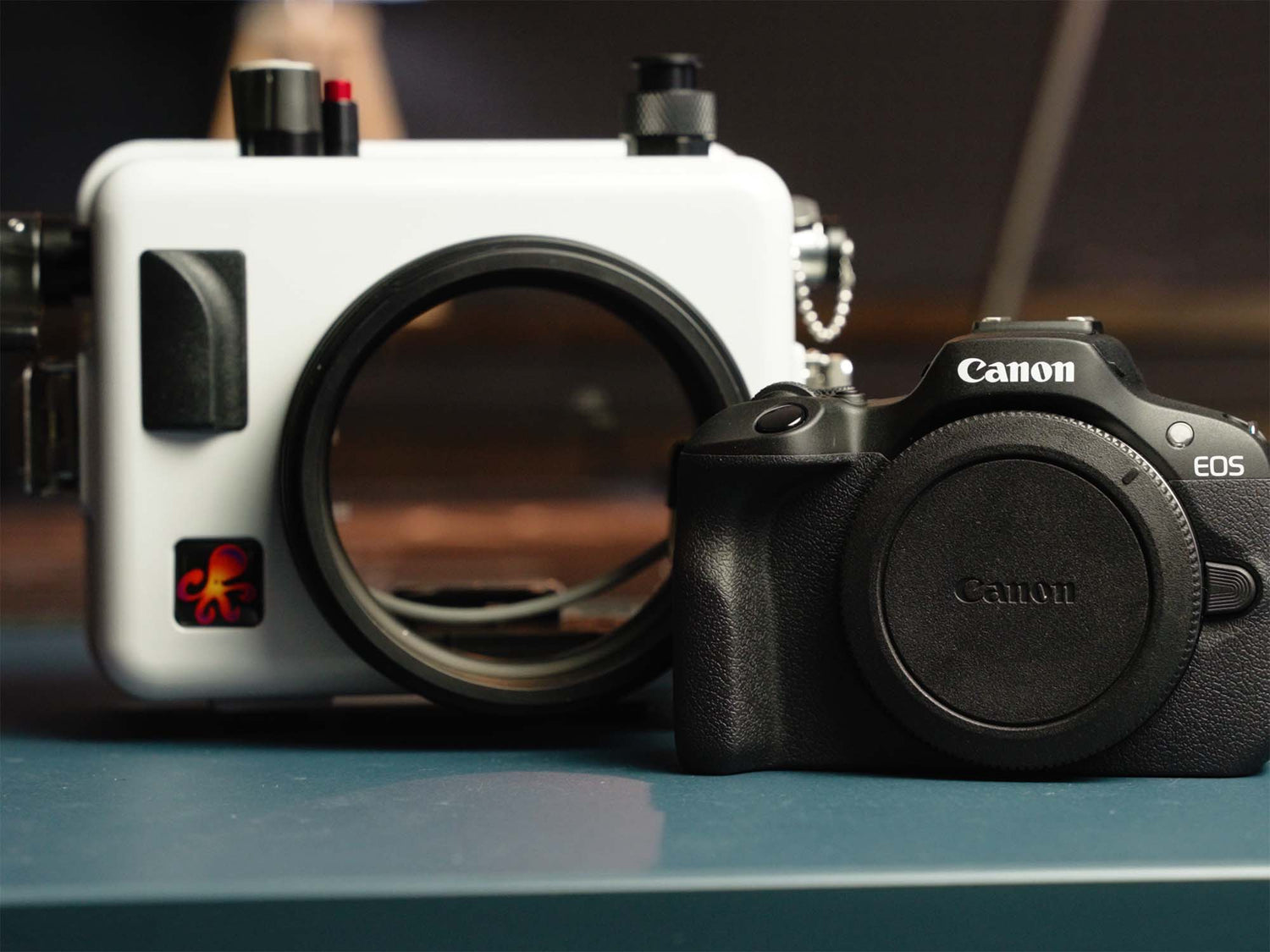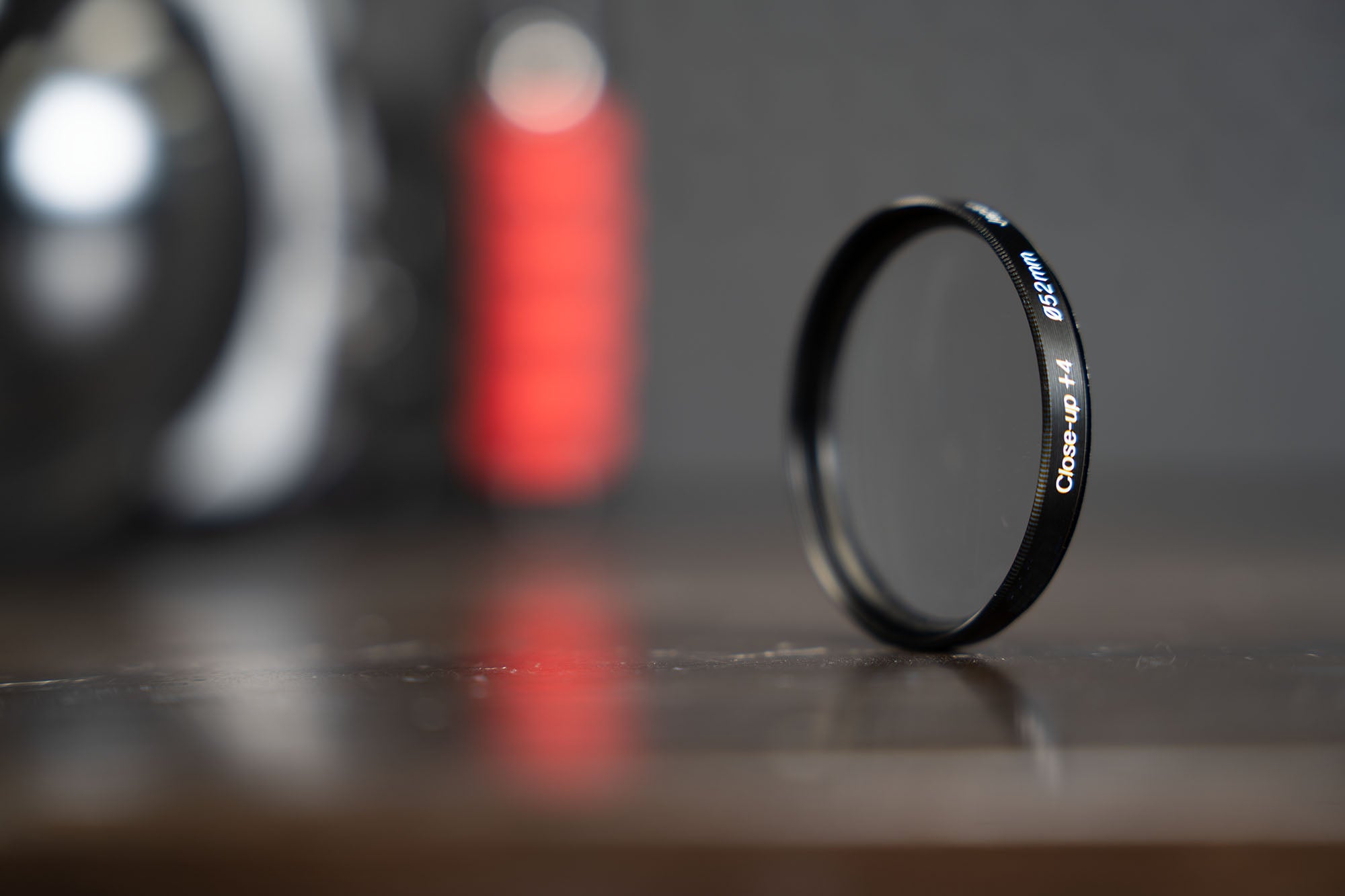By Jean Rydberg
Want to read instead of watch? Click here to jump to the article version.
I'm a diver, I'm an underwater photographer, and I've evaluated pretty much every digital camera that's been released in the past 20 years.
If you asked me today, what's the best budget camera system to take underwater? My answer would be the Canon EOS R100.
We're not sponsored by Canon. We're not being paid for this opinion. I'm recommending this because it works better than most other cameras underwater.
The R100 is the most affordable way to invest in a system that can tackle almost anything underwater with ease. And I want to tell you why the R100 is your best choice of a compact point and shoot camera. So let's dive into it.
Size & Ergonomics
I want to start out talking about size because having a compact system for travel is one of the most important things to me. I also think it's a bit of a balancing act because some smaller cameras are just more difficult and uncomfortable for me to use.

Good ergonomics on a camera translate to good ergonomics in an underwater housing. I have average female hands and I can't hold the RX100-series cameras comfortably without my thumb covering the LCD screen. And can you see that record start/stop button? Better sharpen your thumbnail!
Now, I don't have a large hands, but some compact cameras just don't seem to fit in them. My thumb ends up being on the LCD screen. I can barely hit this record start stop button and I kind of feel like I'm going to drop it because I'm clumsy and there's no grip on the front of the camera. The R100 has a classic grip style and a lightweight body, which fits well in my hands.
The grip also leaves room for a good sized battery pack, which provides over 400 shots per charge. And typically you're going to get even more than that, easily a full day of driving on a single charge.
Image Sensor
Those shots are going to be a lot brighter and more detailed than what you would capture with a compact camera, with a built in lens. That's because the R100 has a 24 megapixel APS-C size sensor. That's about three times the size of the Sony R series sensor. So the EOS R100 will capture more light and better images in low light situations. I know pixel count isn't everything, but 24 megapixels is a good benchmark for the minimum I would look for in a higher end camera these days.

Larger image sensors capture more light and more detail. The APS-C sized sensor of the Canon EOS R100 is three times the size of the RX100 series sensor and 60% larger than the micro four-thirds sensor used in Olympus and Panasonic mirrorless cameras.
Canon has been industry leading for several years now on autofocus capabilities and a camera's ability to find and lock focus quickly is critical to getting a good shot. The autofocus system of the R100 will help you get the shot even when shooting in low light or when the subject is moving.
Exposure Modes
And in addition to the camera's automatic modes. The EOS R100 gives you full creative control over important exposure settings. This is going to be a huge step up if you've been shooting something like your iPhone or maybe an Olympus TG-6 camera where your exposure controls are really limited.
You don't have to be intimidated by exposure settings. I recommend starting out with Steve Miller's tutorial on setting your aperture. Then check out the cheat sheets section in the photo school of our website. You'll get your camera set and get the right shots in almost any situation.
Interchangeable Lens Mount
The most versatile aspect of the Canon R100 is the lens mount. It comes with an 18-45mm zoom lens, which is a really good range to start out with underwater because it can handle relatively large subjects at the 18mm setting. And it also focuses down to less than eight inches which is great when shooting smaller subjects and the lens can be taken on and off and changed for a wide angle or macro lens.

A good camera lens is an investment that will do double-duty on land. If you want a system that's lightweight, affordable, and easy to use, choose an excellent camera lens behind a dome port.
Canon's lens lineup includes some of our very favorites for underwater photography. Check out our article on the best Canon RF Mount lenses to start with. A good lens is one of the best investments you can make in your photography.
I like to invest in a good lens that attaches to the camera instead of one that attaches to the front of my housing. It makes the system more compact, lighter, and easier to handle underwater. It also becomes something that I can use throughout my travels when I'm shooting photos on my surface intervals.
Investment
When I talk about investments, I think it's incredible that you can get into the R100 system for less than $2,000. Canon offers several step up cameras from the R100, but you're going to be paying at least $500 more for a few extra features.
The truth is that no other camera manufacturer is offering this much performance in a more competitively priced camera body. Right now you're getting the 24 megapixel camera with the APS-C size sensor, which is 60% larger than the micro 4/3 sensor found in Olympus and Panasonic cameras. The larger sensor is going to give you more detail and better low light performance.
You get the Canon technology. Canon has been years ahead of its competitors in autofocus and Image processing technology, and the R100 really performs well here in the Ikelite system.

Capture photos as good as any professional camera with a system that's a fraction of the size. The R100 gives you the most bang for your buck.
You also have affordable, dome and flat port options. You get the support of a full range of wide angle zoom and macro lenses due to the interchangeable port system. The last thing you want to do is shoot an interchangeable lens camera inside of a housing with a fixed flat port. That would be like ordering an appetizer at a buffet.
With Ikelite you also have a housing that is made here in the USA and built to last as long as you want to use it. We're here to support you like no other manufacturer.
I'm looking forward to sharing more with you about the Canon EOS R100 in future articles and videos.
If you have any questions about the R100 or any underwater system reach out to us by emailing ikelite@ikelite.com.
Additional Reading
The BEST Piece of Advice as a Beginner Underwater Photographer [VIDEO]
The Best Canon RF-Mount Lenses for DLM Underwater Housings
Canon RF 85mm f/2 Macro Underwater Review and Tips [VIDEO]
The BEST Entry-Level Compact Camera Housing Underwater Right NOW! [VIDEO]
Canon R10 vs R7 // Best Crop Sensor for Underwater Photography [VIDEO]
 Jean Rydberg, daughter of Ike Brigham, became President & CEO of Ikelite in 2006. Prior to that, she wisely pursued a degree in Astronomy & Astrophysics to prepare herself for the challenges of running a technology-driven manufacturing business with global distribution. Jean fully embraces the need to travel outside of her hometown of Indianapolis to experience good diving. She believes that any camera is capable of amazing results in the right hands, and anyone can become a great photographer given the right advice. When she's not working she's spending time with her husband, cats, and two daughters (though not necessarily in that order).
Jean Rydberg, daughter of Ike Brigham, became President & CEO of Ikelite in 2006. Prior to that, she wisely pursued a degree in Astronomy & Astrophysics to prepare herself for the challenges of running a technology-driven manufacturing business with global distribution. Jean fully embraces the need to travel outside of her hometown of Indianapolis to experience good diving. She believes that any camera is capable of amazing results in the right hands, and anyone can become a great photographer given the right advice. When she's not working she's spending time with her husband, cats, and two daughters (though not necessarily in that order).













![Assemble Your Housing Like a Pro [VIDEO]](http://www.ikelite.com/cdn/shop/articles/xxl-mat-cover.jpg?v=1691614041&width=1800)